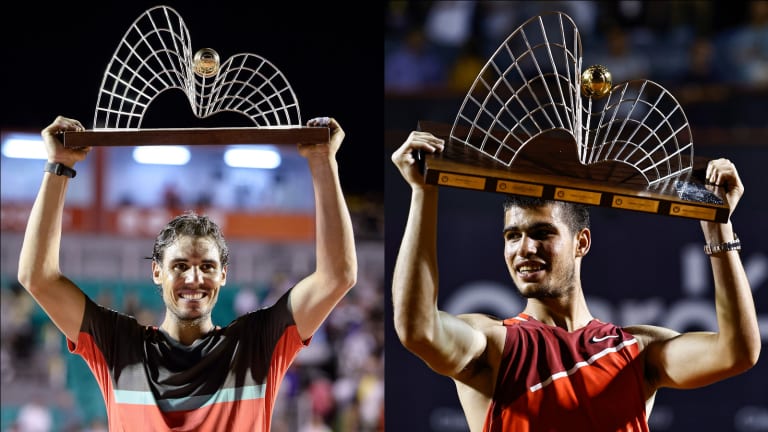Rio de Janeiro, Brazil
As Nadal and Alcaraz can attest, the Golden Swing is a tremendous opportunity for players—and a lively festival for fans
By Feb 17, 2023Rio de Janeiro, Brazil
Joao Fonseca denied winning Rio Open homecoming by Alexandre Muller
By Feb 19, 2025Rio de Janeiro, Brazil
Argentina's Sebastian Baez beats compatriot Mariano Navone to win Rio Open title
By Feb 25, 2024Rio de Janeiro, Brazil
Sebastian Baez and qualifier Mariano Navone set all-Argentinian final in Rio de Janeiro
By Feb 24, 2024Rio de Janeiro, Brazil
Defending champ Cameron Norrie beats Seyboth Wild to reach Rio Open semifinals
By Feb 24, 2024Rio de Janeiro, Brazil
Reigning champ Cameron Norrie joined by 17-year-old João Fonseca in Rio Open last eight
By Feb 23, 2024Rio de Janeiro, Brazil
Brazil's João Fonseca becomes first player born in 2006 to win ATP Tour match at Rio Open
By Feb 21, 2024Rio de Janeiro, Brazil
Carlos Alcaraz shares positive update after ankle sprain injury in Rio: “See you in Indian Wells!”
By Feb 21, 2024Rio de Janeiro, Brazil
Carlos Alcaraz rolls right ankle on second point of Rio Open match, pulls plug against Monteiro
By Feb 21, 2024Rio de Janeiro, Brazil
Defending champ Cameron Norrie moves into Rio Open second round
By Feb 20, 2024As Nadal and Alcaraz can attest, the Golden Swing is a tremendous opportunity for players—and a lively festival for fans
Rafa and Carlitos have lifted trophies in Rio, the third of four stops on a spirited clay-court romp each February.
Published Feb 17, 2023
Advertising
Advertising
Advertising

Rafael Nadal won the inaugural edition of the Rio Open in 2014; Carlos Alcaraz is the clay-court tournament's latest champion.
Advertising

“The crowds are so much more spirited than anywhere,” says Nicolas Pereira, a Venezuela-raised former pro, of the Golden Swing tour stops. “The Latin American spirit is high.”
© Getty Images